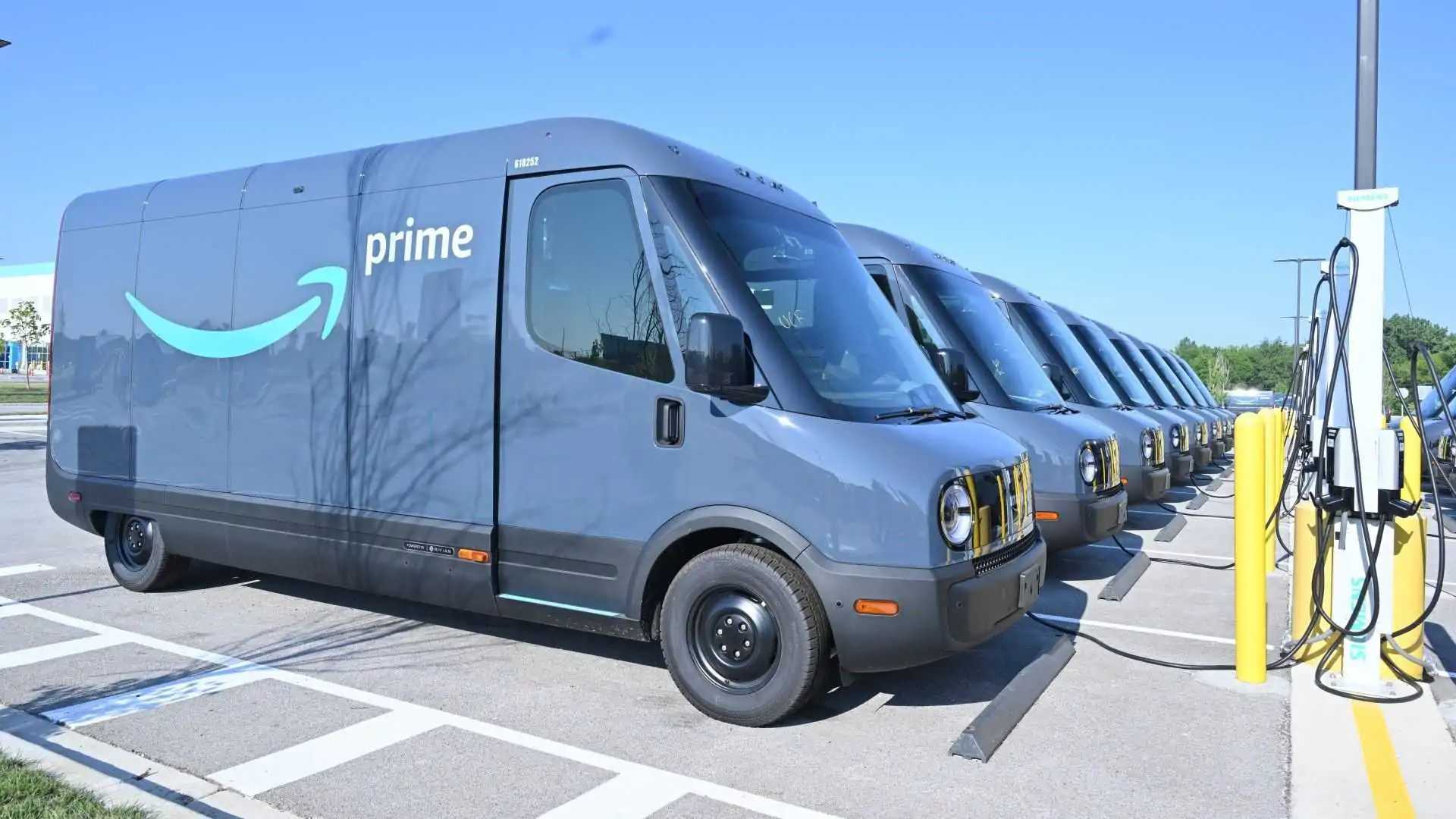
AMAZON INSTALLED OVER 17,000 CHARGERS FOR ITS RIVIAN ELECTRIC VAN FLEET
The retail giant is now the largest operator of private EV charging infrastructure in the U.S.
No other company seems as determined to decarbonize its commercial delivery fleet as Amazon. The Seattle-based retail giant now operates a fleet of more than 13,500 Electric Delivery Vans (EDVs) across the U.S. and it has now established a robust charging network to ensure that the van delivering your precious Amazon Prime parcel doesn't run out of juice on its way to your home.
These vans are made by California EV upstart Rivian, which also makes the R1T electric truck and the R1S SUV. Rivian initially manufactured the EDVs exclusively for Amazon. It opened them for other businesses after ending its exclusivity agreement with the e-commerce giant last year. Amazon’s adoption of these Rivian EDVs was marred with troubles and delays, but its approach has now become a blueprint for other companies.
One of its biggest challenges was providing delivery drivers a place to plug in. The Rivian EDV has a gross vehicle weight rating (GVWR) of 9,350 pounds. With that much heft, its range depletes faster than light-duty electric cars. A reliable charging network for a company that prides itself on one-day deliveries is a no-brainer.
Amazon established an expansive charging network at its warehouses to tackle this issue. Bloomberg stated that Amazon has now installed 17,000 chargers at 120 warehouses across the U.S., making it the largest operator of private charging infrastructure in the U.S.—all in just two years.
Installing thousands of chargers requires tremendous electricity supply. Amazon worked with utility companies to anticipate the power needs in specific regions. Even for the country’s biggest charging networks like the Tesla Supercharger and Electrify America, this step is often the most crucial—estimating the power demand and working with contractors and utility providers to facilitate the necessary electrical upgrades.
The report cited an example of an Amazon warehouse in Chicago. Power utility company Commonwealth Edison initially struggled to secure the additional power capacity for new charging stations. Ultimately, ComEd repurposed old transformers for Amazon and routed additional power for 1,100 chargers at four suburban Chicago warehouses.
Another challenge was managing subcontractors who worked overnight to rotate vans among available charging dispensers. Instead, Amazon made that work in-house, allowing subcontracted workers to drive and deliver, rather than restrict them to managing rotation at charging stations. It's also working to eliminate the need for rotation by making more dispensers available to plug in at all times.
Crucially, the drivers seem happy. Rivian Amazon EDVs are ubiquitous in New York City. I once walked up to a driver delivering parcels in Southern Brooklyn. He grinned ear to ear when I asked him about the driving experience. He said the van was incredibly smooth and relaxing compared to a Mercedes-Benz Sprinter he previously used.
He showed how the 360-degree cameras provided a surround view of the environment around the van on the 15.6-inch central display. He also gave me a tour of the cargo area, showing how the automated rear bulkhead door works, and how easy it is to compartmentalize parcels. He added that the 150-odd mile range was adequate to snake around town.
Given the countless hours he spent in the van, he said the cabin was comfortable to lounge in, and the quiet ride reduced the stress of navigating such a large vehicle around congested streets and traffic jams.
All said, Amazon has a long way to go before it sees any environmental and cost benefits of its EDV operations. Amazon’s long-haul transportation is still carbon intensive, and decarbonizing last-mile deliveries in a handful of cities doesn’t seem to have any significant impact—Amazon’s overall emissions are up 39% since 2019.
Moreover, the charging hardware, including the Level 2 dispensers, cost the company between $50-90 million, according to Bloomberg data sourced from the National Renewable Energy Laboratory.
As aforementioned, Rivian has only delivered some 13,500 EDVs to Amazon so far. The total order is for 100,000 vans the company aims to go net zero by 2040. Amazon’s successful integration of these vans, and Rivian opening up the order book to commercial fleet operators has also caused a ripple effect across the cargo hauling industry.
Telecom giant AT&T will also buy Rivian’s EDVs and several DHL-branded EDVs were also spotted recently. Moreover, sales of rivals like the Ford E-Transit, Brightdrop Zevo 400, Mercedes-Benz E-Sprinter, and Ram Promaster EV are also picking up, all of which should create a net positive impact on emissions.
More EV News
2024-04-16T14:28:57Z dg43tfdfdgfd